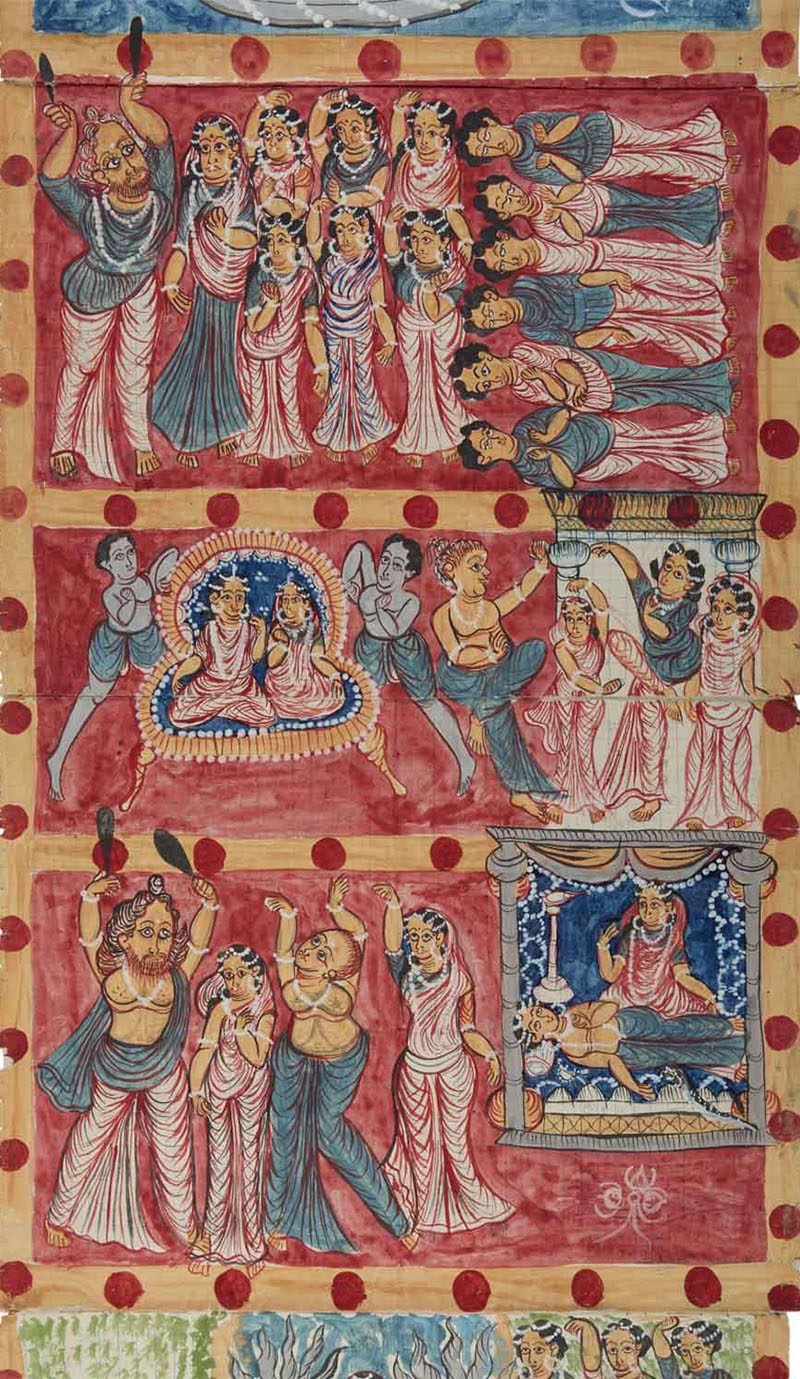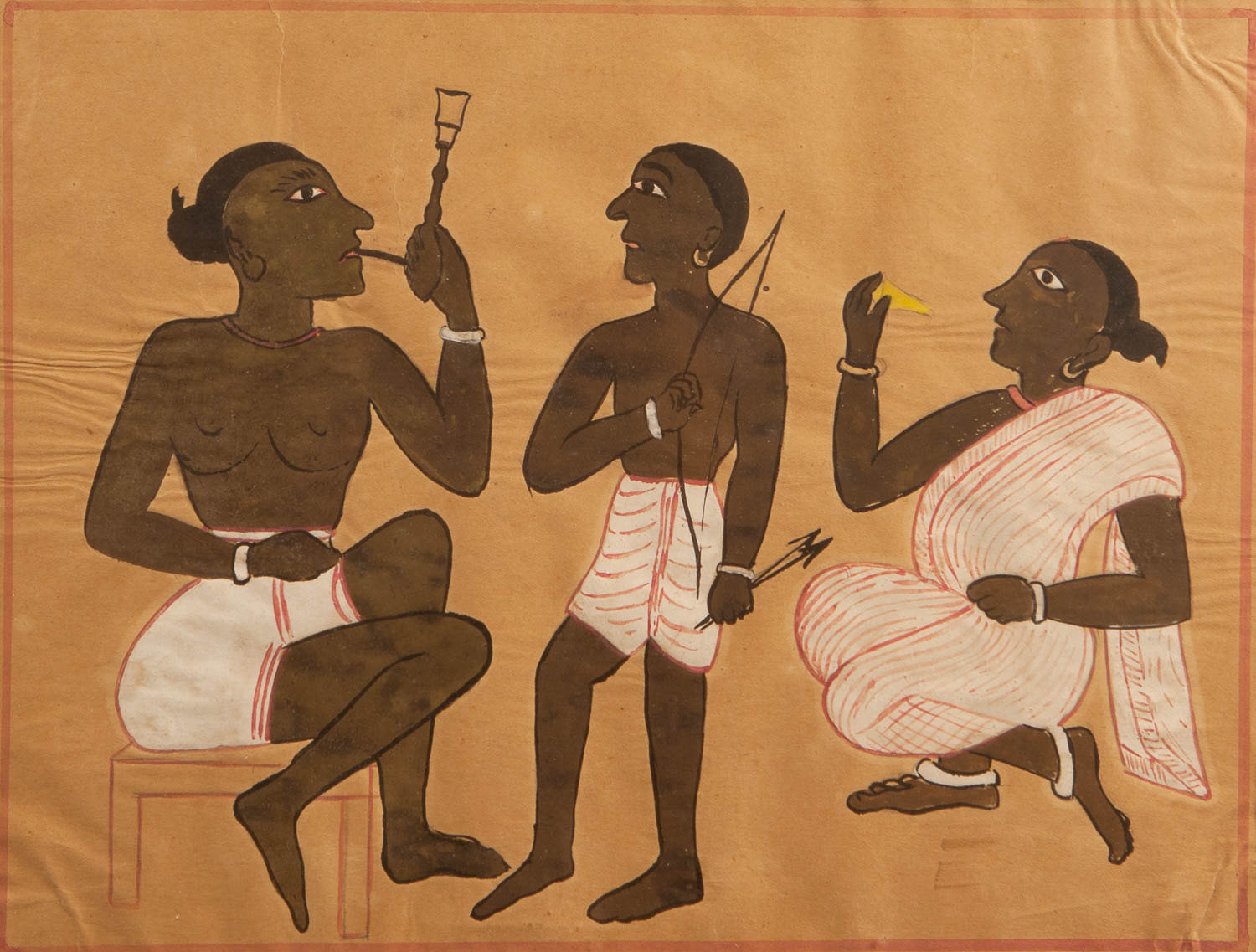ARTICLE
Patachitra
Patachitras depict religious, mythological and folkloric themes. Foremost among these are Vaishnavite narratives of two of Vishnu’s avatars: Jagannatha and Krishna. Prominent depictions include highly stylised paintings of the Jagannath Temple, scenes from the epics Ramayana and Mahabharata, and regional mangalakavya texts such as the Chandimangala and Manasamangala. The painters follow certain conventions from the classical treatises on Indian art such as chitralakshana, paying attention to formal aspects of painting composition. One of the most distinguishable features of patachitra is its typical style of portraying faces such as long noses, prominent chins and elongated eyes. The paintings also have ornately designed borders that follow the colour scheme of patachitra’s narrative scene.
The tradition is presently concentrated in and continued by the artist community of the village Raghurajpur in Odisha. No longer restricted to ritual use, these paintings enjoy a commercial market within India and internationally and are now rendered over a wide range of materials from synthetic cloth to paper, and in varying sizes.
Bibliography
Our website is currently undergoing maintenance and re-design, due to which we have had to take down some of our bibliographies. While these will be re-published shortly, you can request references for specific articles by writing to hellomapacademy@map-india.org.









